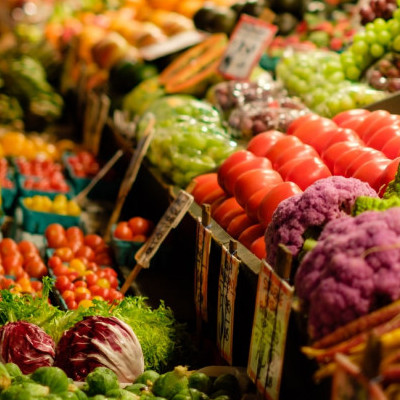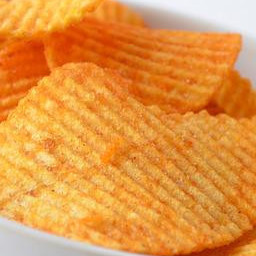
We need to eat fruits and vegetables in high amounts daily for health, wellness, and a strong immune system. Studies show that a healthy diet along with exercise, proper stress-management techniques, and other lifestyle choices can significantly reduce the risk of chronic diseases.
We need healthy meals to maintain good health, but why are healthy foods expensive? This post dives into the expense of healthy foods and explores options to cut down on costs and waste.
Junk food vs healthy foods
A trip to the grocery store may now require a calculator. With rising costs, you may need to make sure that you aren´t blindsided before you make your way to the checkout line.
Perhaps you want to start your healthy lifestyle journey, yet you may feel tempted to quit as you compare the prices of junk food which tends to be cheaper than some fresh fruits and vegetables. Before you throw in the towel, let´s take a look at junk food vs healthy foods.
Junk food
Junk food uses more additives to help shorten production time (mass production is the norm) and thus has a longer shelf life. That´s the reason for junk food´s cheaper price. A store-brand bag of potato chips can be less expensive than most fresh fruit and vegetables. Junk food usually comes prepackaged and processed, they do not have seasons, so their prices can remain steady all year.
Healthy Foods
Healthy foods like fruits and vegetables are fragile and perishable. Many times their journey to make it to your local supermarket is a long one. Also when ripe, fresh produce is easy to spoil.
Why are healthy foods expensive?
Seasonal
Fruits and vegetables can be expensive because of seasonality. Out-of-season produce usually comes from farther away, and costs can go up for transporting them. The more human intervention necessary, the more the cost rises. A simple solution for this is to buy produce in season, besides fruits and vegetables picked in season taste better.
Location
Where you live can impact food prices. Generally, food costs less in smaller towns and costs more in bigger cities. For instance, oranges are in abundance in California and Florida, so they´ll be cheaper in these States compared to NY.
Extreme Weather
Extreme weather may cause damage to crops, and this can impact food prices.
Fertilizer
If the price of fertilizer rises, so will the price of fruits and vegetables.
Transportation
The farther the journey of the produce, the more it will cost. Rising gas prices and shortages in the trucking industry can also influence prices.
Production
Less human intervention the cheaper the price, if there is more manpower; the higher the price.
Expiration Dates
Healthy foods usually have short expiration dates and can spoil easily.
Supply and demand.

Interesting Facts
An average size pomegranate can contain up to 1400 seeds.
In October 1995, the potato was the first vegetable grown in space.
A cup of dried figs has the same amount of calcium as a cup of milk.
Kiwis contain twice the amount of vitamin C as oranges.
Botanically speaking, bananas are berries, and strawberries are not.
The apples from the supermarket may be up to one year old.
Americans throw away 31% of the food they purchase because of food going bad, around $240 billion collectively and approximately $1,866 individually/per household.
What can you do to reduce costs?
Leftovers
If you have an abundance of food left over, consider using it the next day. You can bring it to work and not have to worry about what you are going to eat.
Freeze it
If you buy produce in bulk, take a sufficient amount for your/your family’s needs and immediately refrigerate the excess.
Drink it
Home-made drinks and smoothies can be a delicious alternative instead of throwing your (spoiled) groceries and money away. Mix the vegetables and fruits you have in your blender and enjoy a nutrient-dense and refreshing drink.
In Season
Fruits/vegetables in season are cheaper, taste better, and can save you money.
Variety
Consider buying healthy foods in different forms, fresh, canned, and frozen.
Bulk
You can save money when buying in bulk. Buying in bulk is a good idea for big families. If you don´t have a big family, perhaps you can consider sharing some items with family members, friends, coworkers, and neighbors and also the cost. Everyone can come out as a winner in this scenario.
Some least expensive fruits and vegetables
Keep in mind that some least expensive fruits and vegetables are:
- apples
- bananas
- watermelon
- Romaine lettuce
- potatoes
- beans
Delivery
Depending on where you live, you can have fresh, low-cost produce delivered to your door. You can search online for low-cost produce delivery services in your area.
DIY
You can grow your fruits/vegetables yourself, even if you do not have a backyard. If you live in an apartment; you can also have an opportunity. Certain fruits and vegetables do not require a lot of space to grow and can even grow from a balcony. You can make your compost and save your food from harmful pesticides.
If you have no experience in gardening, don´t let that deter you. Gardening has many benefits and can improve brain function and self-esteem.

Here´s a list of fruits and vegetables that do not require a lot of space to grow:
- tomatoes
- salad greens (lettuce, spinach, arugula)
- chili peppers
- strawberries
- grapes
- carrots
Reward Programs
You can join your store´s loyalty programs and save money through discounts, coupons, and special offers.
Coupons
Coupons are still a thing. You can collect coupons and save. Now you have free coupon apps at your disposal (Ibotta, and many others, or shop savvy to compare prices).
Discount Stores
Try to find discount supermarkets near you, such as Aldi´s and Lidl, and save on your grocery bills.
Plan
1) Use what you have
Plan meals around what items you have at home. Planning cuts down on the likelihood of you throwing away produce because they are spoiled and an extra trip to the grocery store.
2) Write a shopping list
Creating shopping lists will eliminate impulsive shopping, keep you on the right course, and may stop you from overspending.
3) Shop on a full stomach
Consider eating before going to the grocery store to cut down on impulsive buying.
4) Healthy Recipes
Consider checking out healthy simple recipes for ideas and inspiration. You can even come up with your recipes if you feel adventurous.
Fermenting
Consider fermenting your vegetables as a way of preservation but also to improve your gut health. Lactobacillus is a form of good bacteria present in the fermenting process. Lactobacillus is present in an oxygen-free environment, converts sugars into lactic acid, prevents the growth of harmful bacteria, preserves vegetables, and gives a tangy flavor.
Fermented foods add good bacteria to your gut and can improve your health.
Which vegetables can you ferment?
Almost all vegetables can be fermented. Some require extra measures. Here´s a list of vegetables that are easy to ferment:
- cucumbers
- peppers
- beets
- broccoli
- green beans
- radishes
- cauliflower
Easy fermenting ideas
- Choose vegetables (you can add two or more for added flavor)
- 2 cups water
- 1 1/2 Tbs sea salt (coarse is better)
- Sealable glass jar
- Herbs and spices
Depending on the vegetables of your choice, you can chop or leave them as is.
- Place the vegetable/s in the glass jar
- Add the salt to the water
- Submerge the vegetable/s with water
- Add herbs and spices (optional)
- Close the jar and leave for 2-7 days at 70-75 degrees F
- You should see bubbles in the liquid
- After a week, you could refrigerate (for an additional 2 weeks)
- Enjoy!
Conclusion
Compared to junk food, healthy foods seem expensive. A daily serving of more than five fruits and vegetables is necessary for good health. But a trip to the grocery store can deter some people from buying healthy foods because of the price.
It may seem that healthy foods are expensive, but if you consider the costs you would have to pay to treat chronic diseases, there´s no comparison. Your body is wonderful, powerful, and complex. Just as you won´t put regular gas in a Ferrari, your body needs premium food choices to keep you healthier for longer. Health is wealth.
There are always ways to cut down on expenses but never cut down on your health; choose premium every time.
If you suspect that your diet may be lacking, read this.
- Healthy Lifestyle Meals Prep | Elevate Healthy Lifestyle Choices
- The ugly side effects of stress and what you can do about it | Elevate Healthy Lifestyle Choices
- Top 27 healthy gift ideas for the holidays | Elevate Healthy Lifestyle Choices
- How can you make your skin glow? | Elevate Healthy Lifestyle Choices

Good job with this article on how we can eat better on a budget. Meat and fish are among the most expensive items on a shopping list while plant protein often costs less.
Pulses (beans, peas, and lentils) are nutritious, very cheap, and work well in place of meat. In my opinion, we should avoid buying processed foods. Often you can make similar dishes quickly and easily for much less.
Thank you, Ivan, for sharing your valuable feedback.
Yes, you are correct that meat and fish are among the most expensive items and that pulses can be a cheaper replacement.
For those who enjoy the occasional meat and fish dishes, there are ways to save on them, as mentioned in the article, such as using coupons and going to discounted stores.
A healthy lifestyle is most rewarding. For more healthy meal ideas you may like Healthy Lifestyle Meals Prep | Elevate Healthy Lifestyle Choices
Cheers,
Dana